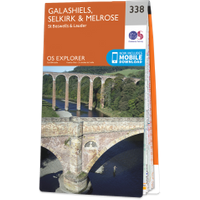

Mertoun House, now known as Old Mertoun House, is a 17th century house built around the core of an older tower.
The early history of the lands of Mertoun is unclear. An Adam of Merton is mentioned as a juror in an inquest regarding the lands of Hop-Kailzie in 1259. In 1292 John, abbot of Newbattle, resigned “land which belonged to Resum son of Robert in the tenement of Mertoun” in favour of Sir William Bisset, to be held by his heirs in perpetuity in exchange for an annual fee of forty shillings. This transaction is referred to again in 1312 when Gervase, the abbot of Newbattle refers to the “three marks annual return he used to annually receive from Sir William Bisset of Mertoun and his heirs for a certain land in the tenement of Mertoun”.
In the first half of the 15th century an Isabel de Mertoun married a member of the Haliburton family, and Mertoun passed to their son William Haliburton. It is almost certain that a castle would have been built here by this time, although what form it took is unclear. Given the style of neighbouring castles from that period it is not unreasonable to assume that it took the form of a strong square tower. This castle was burned by the Earl of Hertford in 1545.
The castle was presumably rebuilt as nearby a beehive doocot was built in the 16th century. Rising to a height of around 9.1m and measuring around 4.5m in diameter, the doocot is divided into four sections by string courses and features an opening at the top to allow birds in and out. The date 1576 is carved over the doorway which is said to make it the oldest dated doocot in Scotland.

The castle appears on Gordon’s map as Martine and in Blaeu’s Atlas of Scotland as Martoun Tour.
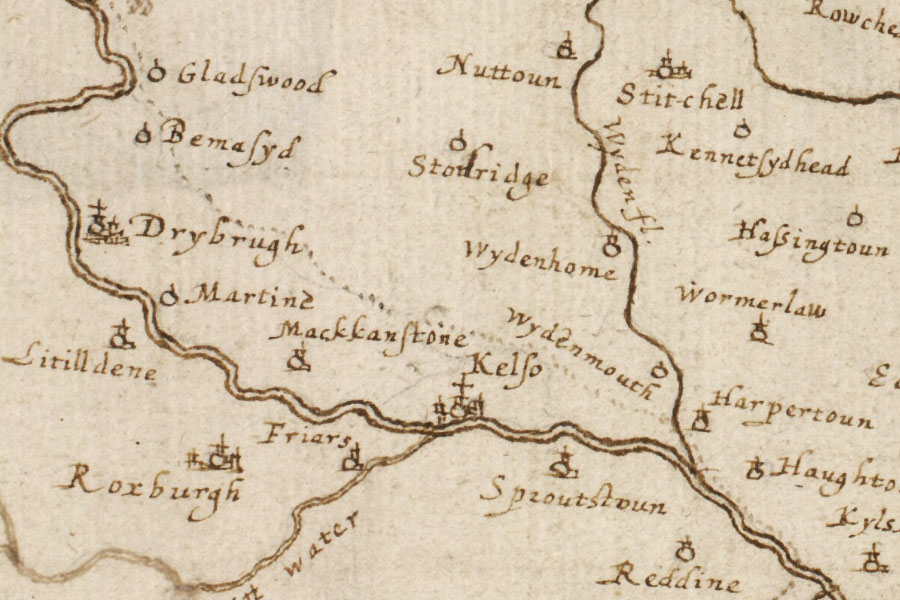
Robert Gordon, c.1636-1652
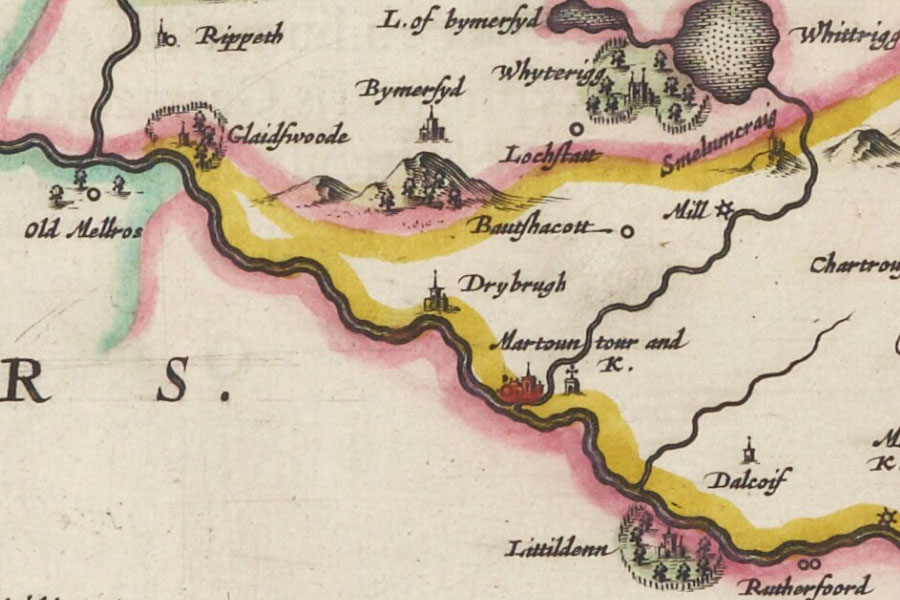
Joan Blaeu, Amsterdam, 1654
The last Haliburton to live at Mertoun seems to have been John Haliburton of Mertoun who died in 1640, and some time after this the barony was acquired by Sir William Scott of Harden. The old baronial estate included the house, doocot, associated park, the kirklands of the parish church and the hamlet of Myretoun or Mertoun.
Sir William is described in a ratification charter of 1649 as the “heritable proprietor of the lands and barony of Mertoun”. A park associated with Mertoun House is mentioned in the same year, and may have been a lightly-wooded deer park. Sir William’s son, also Sir William, made Mertoun the family’s main seat and his brother, Sir Gideon Scott of Highchesters, took up residence at Harden.
The tower is thought to have been remodelled in 1677, that date appearing carved above the doorway. It may have been at this time that the dormer windows were added. By this time the house was oblong in plan and consisted of two storeys plus an attic with crow-stepped gables at each end.
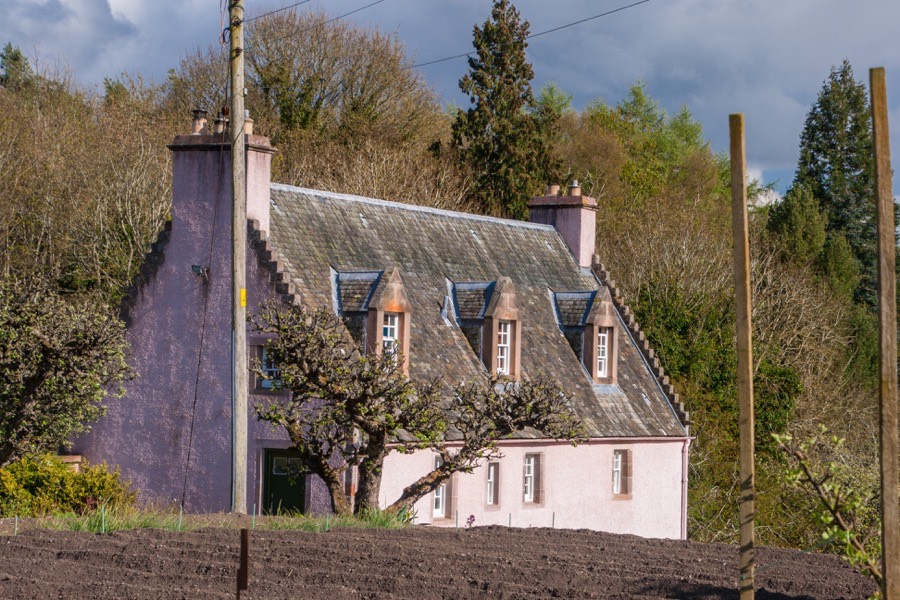
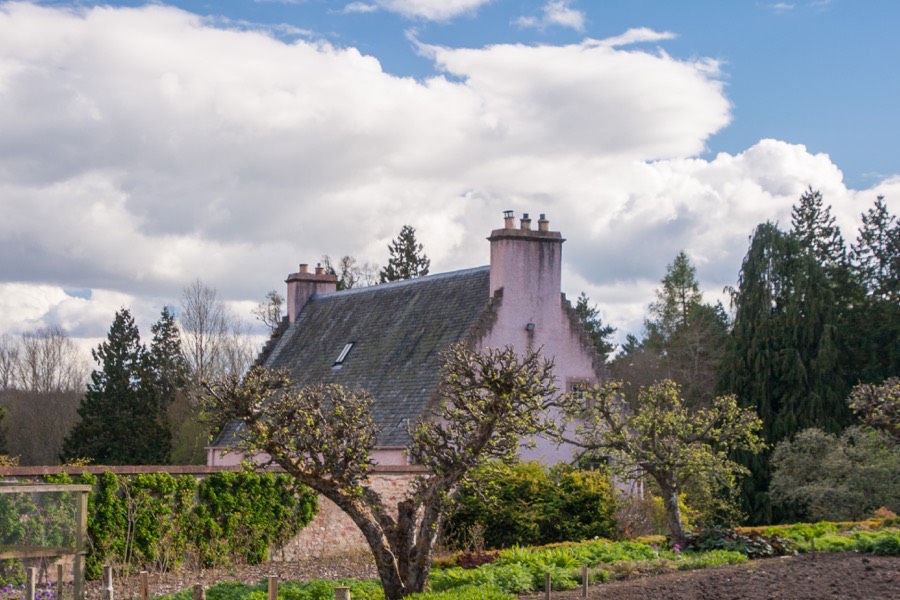

In 1703 Sir William’s grandson, also Sir William, began work on a new house, designed by Sir William Bruce, which became the family’s main residence. Over time the estate was extensively landscaped, with the village removed and a walled garden created around what had become known as Old Mertoun House in the late 18th and early 19th centuries.
In 1912 the Scotts sold the estate to John Egerton, Viscount Brackley (later 4th Earl of Ellesmere), and moved back to Harden. Viscount Brackley carried out further work on the new Mertoun House and the wider estate, and some time after 1915 the old house appears to have been remodelled.
Upon the Earl’s death in 1944 the estate passed to his son, also John, 5th Earl of Ellesmere, who became 6th Duke of Sutherland in 1963 when his distant cousin the 5th Duke died without an immediate male heir.
The Duke sold several masterpieces from the family’s extensive art collection to fund the development of the gardens and in 1984 he established the Mertoun Gardens Trust, opening the gardens to the public. Old Mertoun House is now home to the head gardener.
Alternative names for Old Mertoun House
Martin House; Martine; Martoun Tour; Merton House; Mertoun House
Where is Old Mertoun House?
Old Mertoun House is in the parish of Mertoun and the county of Berwickshire.
Grid reference: NT 61984 31951
Lat / long: 55.579718, -2.604563


